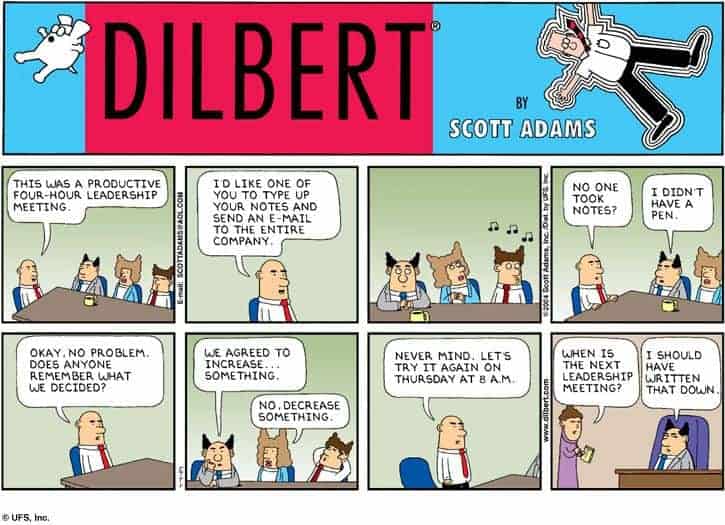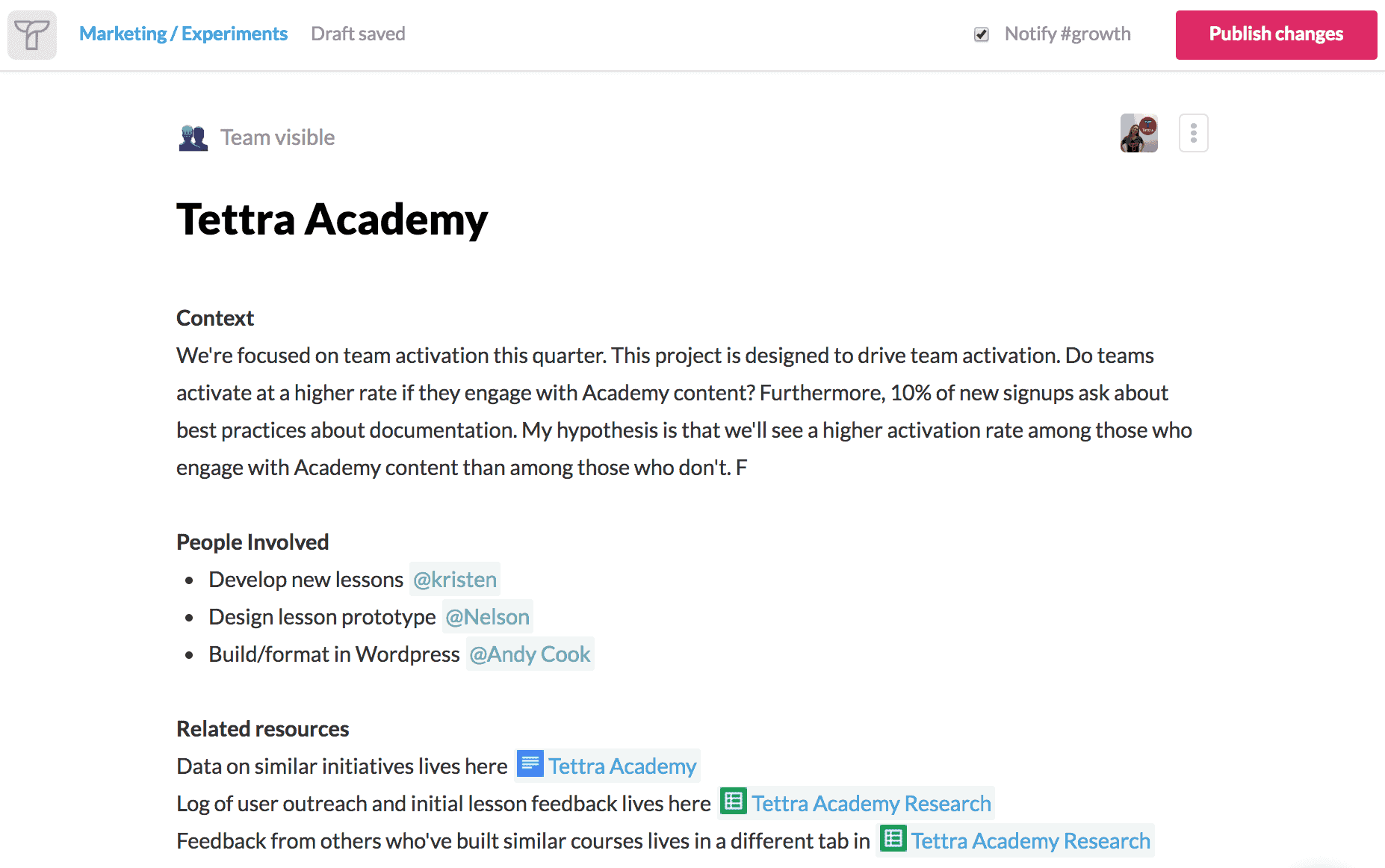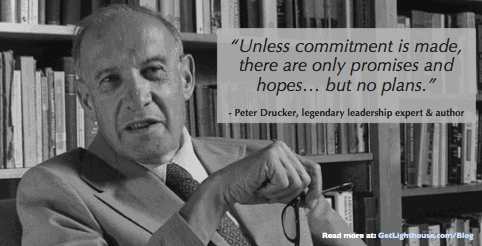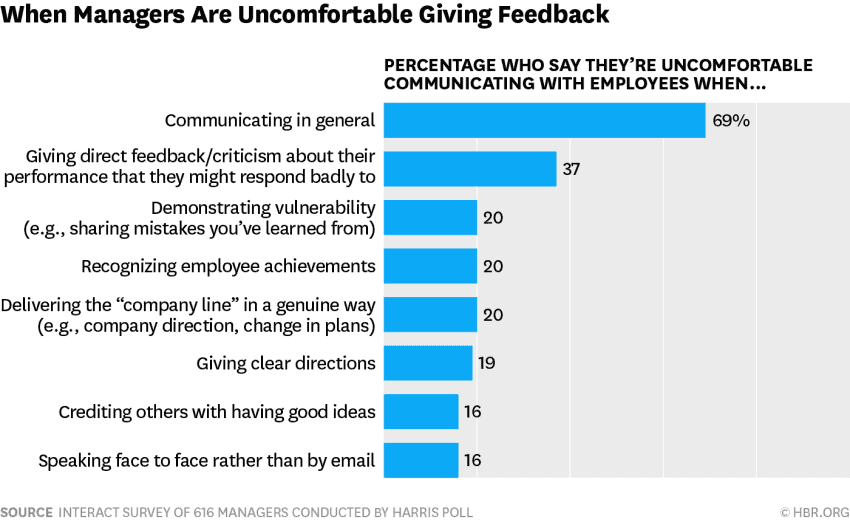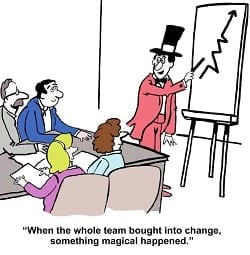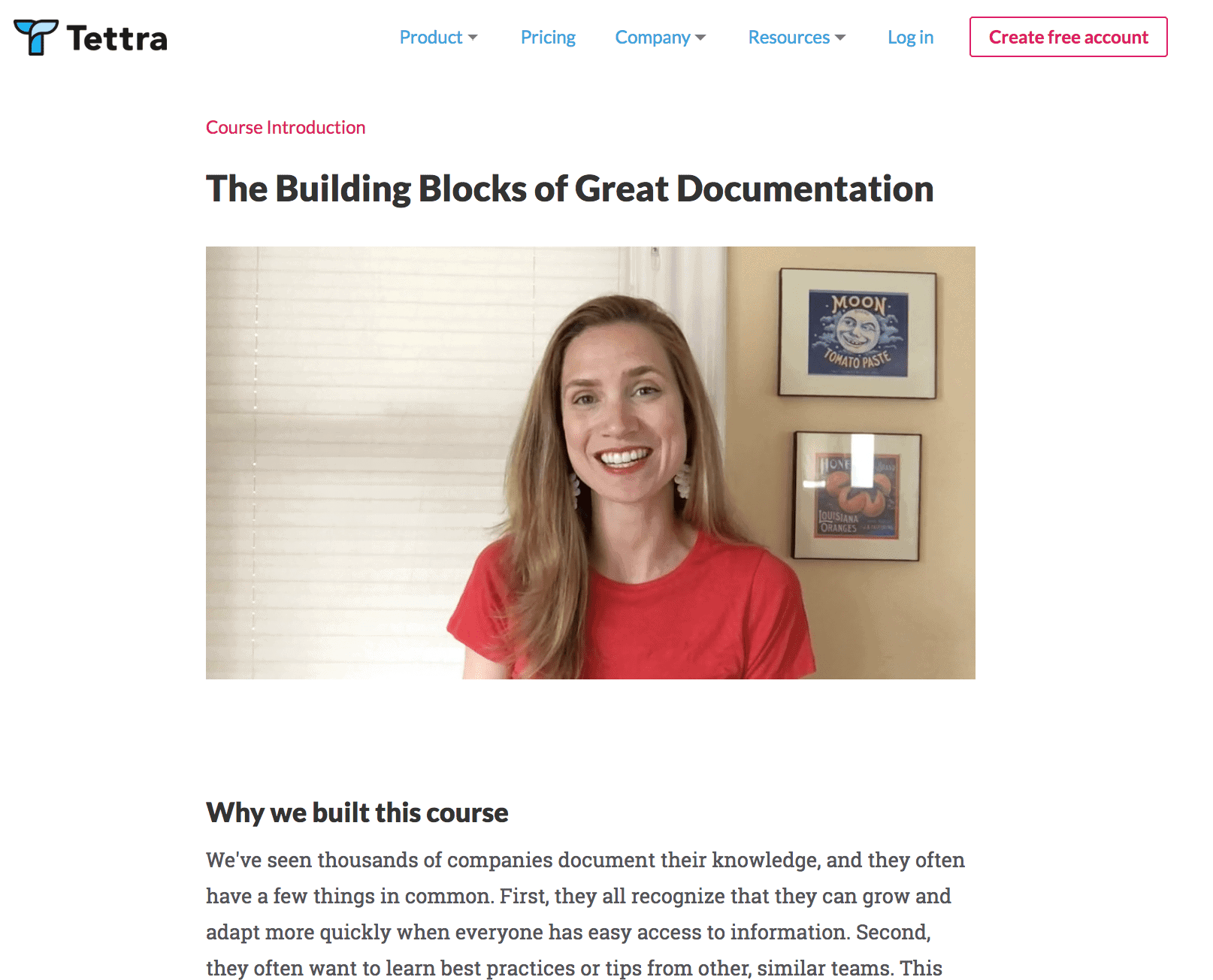Years ago, while working at another tech startup, I experienced one of the most uncomfortable meetings of my life.
A coworker was making her pitch for a new website design. Her idea was good, and yet, the discussion grew tense as various people, (including the CEO) got hung up on mundane details about the navigation.
No one seemed able to focus on the big picture: why we needed a new design and how we'd get there. The meeting dragged on far past its end time, never really coming to a conclusion and leaving everyone feeling deflated and disappointed. She had failed to get buy in.
To get buy in, be prepared
These disagreements arose, in large part, because it was the first time most people heard the new plan. My coworkers hadn't had a chance to voice their concerns, questions, and ideas. My colleague hadn't built support before making her pitch, nor taken the time to generate buy in from the team.
Getting buy in is critical to your success at work. Not only is it a good test of your idea's viability, but oftentimes, it's a necessary first step to making your idea a reality.
Given how important this is to being successful, today, we take a look everything you need to know to successfully get buy in at work. We'll cover why you should always make buy in a top priority for your new projects, how to generate it, and what to do once you get buy in from your team.
Everything You Need to Know to Get Buy in at Work
Gaining support from your team serves multiple purposes. First, it's often necessary when you want to pull off something new.
For instance, you'll need your manager's approval before starting a new initiative. If there are costs associated with the new initiative, it may be necessary to get budget approval from the finance team, too.
Also, rarely is anyone's work only for them, so as you work with others, or your project impacts them, you'll want to get them informed and excited, so they can help you make it a reality.
There's no "I" in "Team"
You learn a lot from the process of getting your coworkers' buy in. As Steve Jobs put it, "Great things in business are never done by one person. They're done by a team of people.”
To get your team or coworkers excited, make a point of sharing not just the idea itself but what prompted it in the first place.
When my colleague shared her idea for the new website design, she'd already spent a lot of time digging into visitor data, exploring competitor sites, and doing keyword research. Unfortunately, no one in the room knew this context, because she didn't share any of it in the meeting. Had she shared her thinking along the way, others might have come to similar conclusions.
Instead, everyone had different levels of understanding of the problems and why she was making the choices she had already made. This led to the confusion, and a meeting that never ended.
How to Get Buy In from Your Team
You have an amazing idea, and you know you need your team's help. Where should you start? What are the tactical steps you should take to build buy in from those around you? It might help to make a list of your steps.
Here at Tettra, when working on a new project I need to get buy in for, I ask myself a few, key questions:
1) What's the idea? What is this project's "Why”?
I document this on a Tettra page, so others can read about it. When I write it out, I frame the idea in terms of our shared goals.
I want to make sure my coworkers understand why it's important and why we are focusing our efforts and energies on it. Here's an example of what this might look like:
As the best-selling author and speaker, Simon Sinek, shares, people contribute their best work when they believe in the "why” behind what you do. Your team is most likely to support your idea if they understand how it ties back to the mission of the company or your team.
Your goal in all of this is simple: Help everyone see how your project has a strong "why" that matters to you and the team.
2) Why is this idea compelling? Why does it matters now?
Once we have the core "why" laid out, it's important to ground it in the reality of where we are today. To do so, I document how this relates to our quarterly or monthly goal and why it should take priority over other ideas we've discussed in the past.
I also like to include some hypotheses about the impact it will have on the business. This gets people excited about the potential of what this could do to move the needle or improve an experience. In addition, it makes sure we're being data driven about the idea.
3) Is there customer data to support this idea? Can we get data from other companies who've done something like this before?
If we've conducted similar projects or experiments in the past, I like to include data about their performance. Wherever possible, I link directly to the source of the data, so that people can see it for themselves. This ensures people see my work. They know I'm not just spouting opinions, and instead did my homework.
This also helps with skeptics. While some people will trust you and your judgment, some may not be ready to buy in right away. If you show your work and the data behind your idea, this allows skeptics to come to the same conclusion you did much more easily. Take people on a journey through your own thought process.
4) Who needs to be involved? Who has to sign off? Who will be doing the work?
Finally, with all your data organized and your reasoning laid out, you need to think about who all is involved.
To make it clear who this would affect and what responsibilities are being shared, I document as many of the action steps as possible. I also like to include the names of the people involved, so that everyone is clear on their level of involvement, and we can discuss this in case there are questions or concerns.
This list is also perfect for knowing who needs invited to any meetings to discuss the project; if they're deeply involved they should be in group meetings, while if they're merely signing off on or would be interested at a certain step, a quick discussion and occasional updates may be more appropriate. Either way, being disciplined by making a list helps ensure you don't miss anyone, who will later be upset they were not informed or included.
Write it down!
This process of documenting the idea, the data, and the people involved will help you identify gaps you need to fill in or consult others on. You'll also see where you can involve others and who to ask for input. Those people will then find it easier to see your thought process when it's clearly laid out.
It also builds a strong foundation for actually making progress and delivering on the project; here you already have the basics of the project ready before work begins.
When you've fleshed out as much as you can, start sharing with others. Begin with the people who would also be involved in the project or affected most by what you're doing. They'll be most interested, and potentially invested in what you want to do, so their buy in is most important. They can also help you fill in those gaps or make tweaks so the project is more successful.
[Ed note: Remember the critical value of the first follower for any project you start, which we wrote about here before.]
Continue to Get Buy in Throughout the Project
Having a discussion with someone about your idea is just the beginning. Managing expectations, keeping buy in, and updating stakeholders, is an ongoing process. Otherwise, people may be surprised when something goes from an early conversation to launch, or they won't have completed their part when needed.
There are many ways to do this, so do not feel like big meetings are the only way. You can update people through quick emails, chats in a Slack group for the project, standups, as well as various-sized meetings.
Especially important, communicate early and often with your manager and, if you have them, your direct reports. They're most likely to be affected by the project even if they're not actively working on it with you right now.
One of the best places to socialize early ideas is during one-on-ones; it gives you a private time to see their uninfluenced, candid opinion and concerns.
Then, make sure you document these conversations, and share this documentation as well. Ideally, put everything into an easily-accessible knowledge base.
Documentation is your friend
By documenting your conversations and how your project is evolving, you can avoid the risk of anyone missing something important. It also helps build trust as people can easily follow along; everyone can feel more confident knowing that you've looped in the right people, or step in and offer a key suggestion mid-project if they notice something missing.
Another benefit of documenting on a regular basis is your idea stays top of mind. Here at Tettra, we use Slack. Any documentation pushes into the relevant Slack channel for everyone to see. For example, any new product briefs or updates feed into the Slack "Product” channel, which can be reviewed by each team member at their convenience. Here's an example of what this looks like in practice:
This helps all of us stay informed about the why, how, and what of upcoming product changes.
If your wiki connects to Slack or another similar communication tool, then everyone can get real-time updates whenever you add new details. This allows everyone to keep a pulse on your progress without having to ask you every day, or you doing extra work to tell them. It also has the side benefit of giving them a gentle nudge to keep moving on anything they need to do to contribute.
Build momentum once you get buy in
Organizing your thoughts and progress also keep your process moving forward, even if people are out of the office. You will not need to reschedule a meeting because someone is out sick, since they can review your notes and ask you questions later.
The same is true for your colleagues traveling, busy with other commitments, or in other time zones; documenting the idea means people can update others (and get updates) asynchronously. You can avoid unnecessary delays if people are able to keep tabs on it at their own pace.
Strength in numbers
As you circulate your idea, ask your team for their ideas and feedback. It will help make the idea stronger.
When you do, remember to slow down, and be sure to specifically ask everyone for feedback. This is not a rubber-stamping mission nor you dictating what you want.
Your goal is to get buy in and learn from your team so you can improve the idea and maximize the success of your project.
Sadly, according to research shared in the Harvard Business Review, most managers fail miserably when it comes to asking for feedback. Out of thirty behaviors, "asking for feedback” ranked dead last among the million people who answered HBR's management survey. In a similar study, 69% of managers were afraid of all communication with their team:
Remember: getting feedback is a good thing. It's a chance to identify the risks or weaknesses in your project or idea, and improve it. It also helps your coworkers feel some ownership too; they're contributing to the project instead of taking orders from you.
And if you are afraid at work to communicate with others, try these approaches to be more confident.
Specifically ask for feedback.
Be explicit about your request for feedback. Use language like "Please poke holes in my thinking" to encourage others to give feedback. Let them know you value their input and are coming to them before you've made any final decisions. Especially for introverts, it's helpful to take the time to ask them, instead of of assuming they'll simply speak up.
Founder and CEO of Happier, Nataly Kogan, often cites the importance of opening the metaphorical door to communication, in order to create greater psychological safety on a team.
This is especially important when sharing your idea with your direct reports, since they may be less inclined to give negative feedback out of fear or respect for your seniority.
Being explicit about a desire for feedback, and what kind of feedback you want helps create a safer environment fore everyone to raise doubts or suggestions. It lets your team know that their input is important, too; everything has not been decided.
What to Do Once You Get Buy In
You'll know you have enough buy in when people start pushing to move onto the next steps for your project. You can also ask people directly if they're ready to move forward, or if they have lingering questions or concerns.
Once you've gotten traction with your idea, you need to maintain it. Keep up the momentum by clarifying timelines and establishing ownership of key parts as we discussed in the last section.
Share ownership together
According to The National Bureau of Economic Research, when you cultivate a sense of ownership, the organization performs better. The study asked employees about their level of efforts and work commitment. People who felt greater ownership reported working harder than those who didn't. This sense of ownership led to a productivity gain of 4-5%.
Similarly, researchers Priyanka Carr and Greg Walton found that when you gave people a series of challenges, if you framed that their work would be done "together” with others, they worked harder:
"Participants in the psychologically together category worked 48% longer, solved more problems correctly, and had better recall for what they had seen.”
Your team will do better when people feel directly responsible for different parts of the plan, so look for opportunities to involve your coworkers. With strong ownership in place, each person feels invested in making sure their part succeeds. Without ownership, people will care less if quality suffers or timelines are delayed.
The bottom line: Your coworkers are more likely to be invested in the success of your project, and do better work, if they feel ownership for certain pieces of it.
Be clear where you are with the project
Let people know how far along you are in your thinking. For example, with new ideas at Tettra, we use the phrases like, "this is a 30% baked idea" so people know that nothing is set in stone. This helps align people's expectations around perfection (or lack thereof), and the kind of input you're looking for.
For example, I used this phrase a number of times when pitching others on the idea for a "Tettra Academy."
My hunch was that customers would feel more confident about documenting knowledge if we taught them what to document and how to do it. But I wanted to solicit feedback on the idea, as well as get specific input on what to teach.
By telling people that I was only 30% of the way along in my thinking, my team didn't assume I had it all figured out. They were more forthcoming with input and more excited about the idea because they helped develop it. This feedback dramatically changed my approach for the better.
A coworker's suggestion yields gold
One team member encouraged me to create a lesson and share it with actual customers and iterate, based on their input. This was a terrifying prospect. After all, what if it wasn't good? Would it seem weird to view just one lesson without the context of the others? I felt nervous about the idea, but decided to give it a try.
When I shared this first lesson with some customers, I received terrific feedback that changed how I developed subsequent lessons. For example, about half of the customers who shared feedback mentioned that they'd love a rule of thumb for when they should document things. This prompted me to outline a new lesson about the "Rule of Three”: teams should document any process that has three or more steps.
Because I got this feedback so early, I had plenty of time to adapt my approach when building out the next lessons. If I had pushed ahead as planned instead, we would have missed this customer input, my coworker would not have been as bought into the project, and the project would not have launched as successfully as it did.
Share wins and milestones
As you progress, help everyone involved in the project feel proud of the work they're doing. Celebrate and share progress and wins along the way.
It shows gratitude to your colleagues (instead of you taking all the credit), and it's a great way to win over doubters and critics. It also makes people feel heard, like when I was able to share the great things I learned when I talked to customers at the recommendation of my coworker.
Use praise as a tool to keep your team on track with both logistics and their emotional energy levels. For each step of your project plan, identify a timeline and an owner. Emotionally, help people feel proud of the work they're doing and progress they're making. When you praise them, be specific, rather than generalized with your compliments. The more specific you can be, the greater the impact of your compliment.
Remember: Unless you're a solopreneur, you likely need help from others to accomplish new things. Getting buy in takes time, but is worth the effort. With improved communication and clear documentation, you can get buy in from those around you. Embrace it as an opportunity to help make your idea stronger, and work together as a motivated team. You'll have better outcomes and learn what the best path forward is faster.
Kristen Craft is Chief Revenue Officer at Tettra, a knowledge management system for growing teams. Tettra makes it easier to document and share ideas, so you can get buy in from your team.
Want to learn more about how to get buy in? See these additional posts from Lighthouse:
- Learn how a grand gesture can make a big difference in getting your team's support for a change
- The most important and hardest supporter to get is the first follower. Learn how to get them here.
- Motivating people is more than giving orders. Learn how the concept of the elephant and the rider can help you better motivate your team.
- Managing a new team? Take a look at some questions to ask new team members to get to know them.



